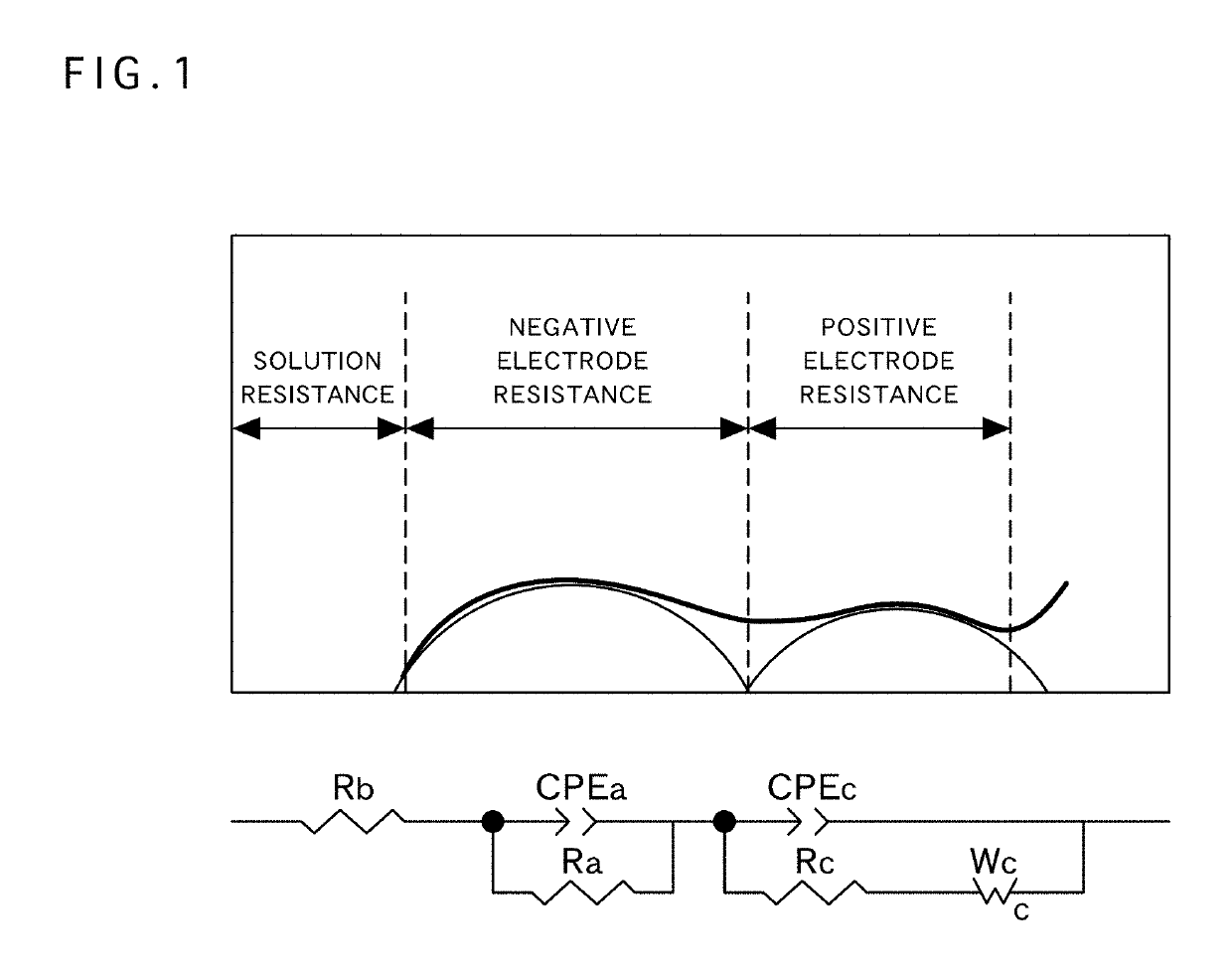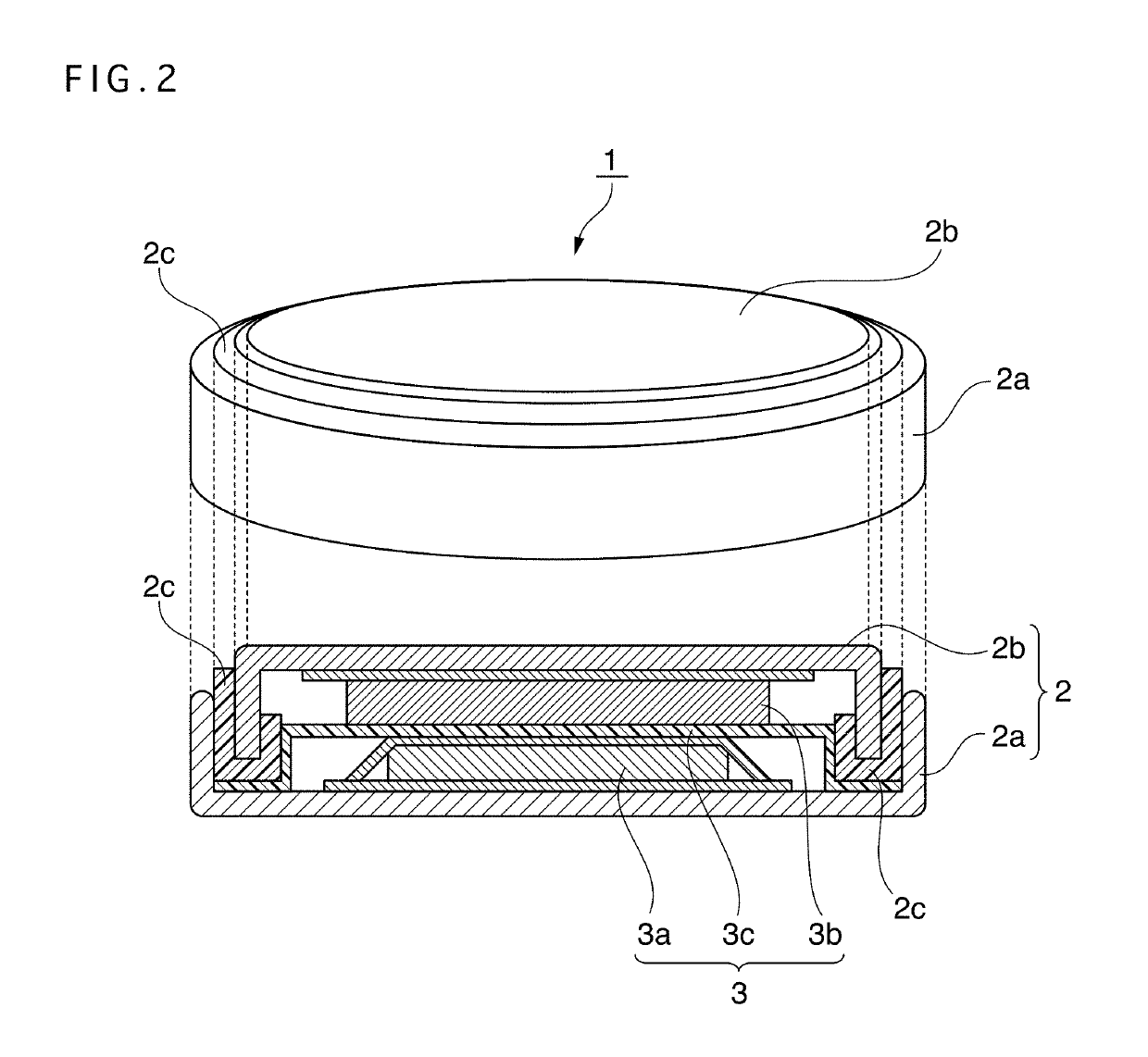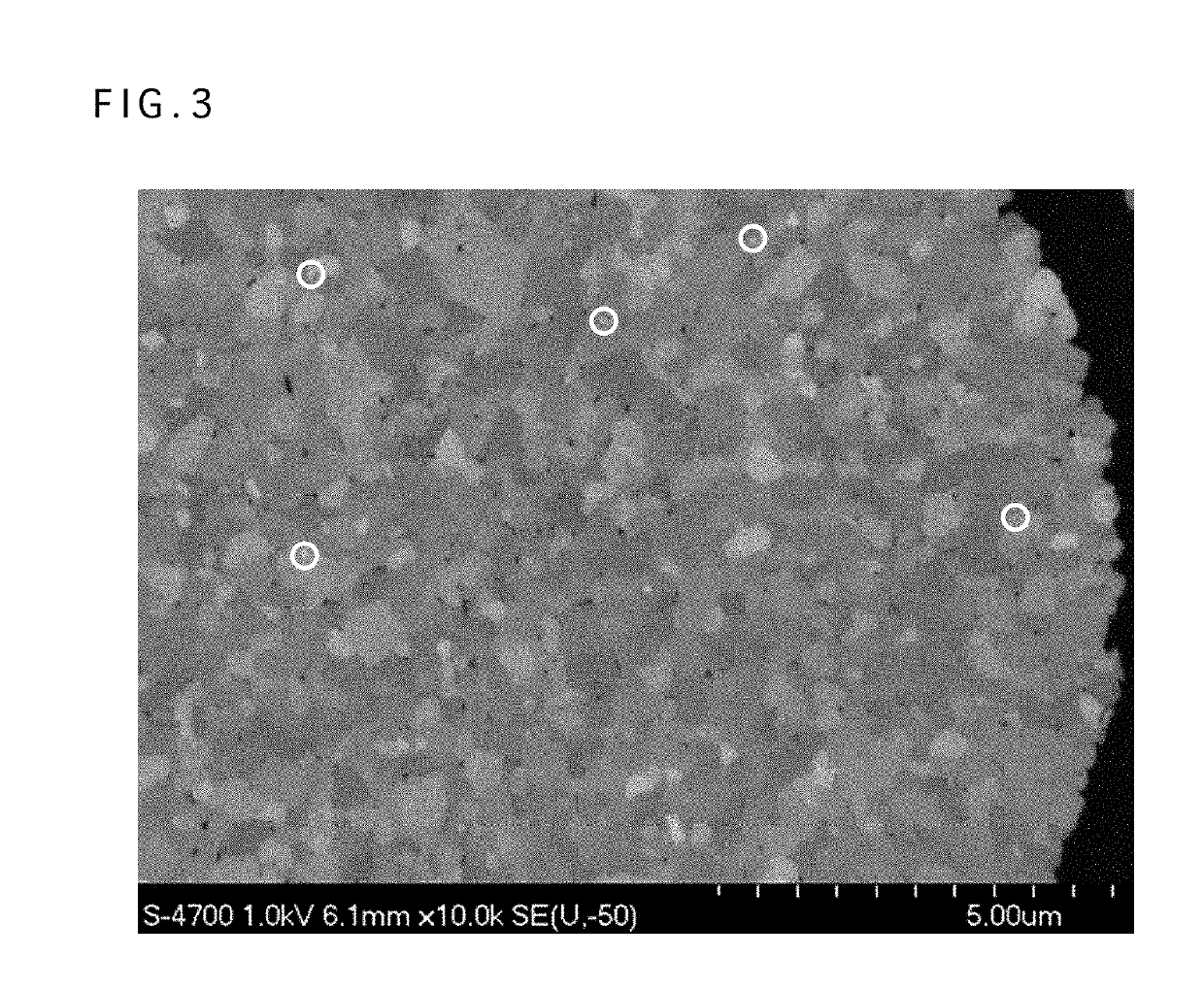Positive electrode active material for nonaqueous electrolyte secondary battery, method for producing same, and nonaqueous electrolyte secondary battery using said positive electrode active material
a nonaqueous electrolyte and active material technology, applied in the direction of positive electrodes, cell components, nickel compounds, etc., can solve the problems of reducing battery characteristics, battery capacity and cycle characteristics, and battery characteristics, and achieve high capacity, good cycle characteristics, and high power
- Summary
- Abstract
- Description
- Claims
- Application Information
AI Technical Summary
Benefits of technology
Problems solved by technology
Method used
Image
Examples
example 1
[0173]A powder of lithium-nickel composite oxide particles represented by Li1.025Ni0.91Co0.06Al0.03O2 and obtained by a known technique of mixing an oxide containing Ni as a main component and lithium hydroxide followed by firing was used as a base material.
[0174]100 mL of pure water at 25° C. was added to 150 g of the base material to form a slurry, followed by washing with water for 15 minutes. After the washing with water, solid-liquid separation was performed by filtration using a Buchner funnel. The washed cake had a water content of 8.5 mass %.
[0175]Next, 1.08 g of tungsten oxide (WO3) was added to the washed cake so that the amount of W was 0.30 at % with respect to the total number of atoms of Ni, Co, and Al contained in the lithium-nickel composite oxide, and the mixture was sufficiently mixed using a shaker mixer (TURBULA TypeT2C, manufactured by Willy A. Bachofen AG) to obtain a mixed powder.
[0176]The obtained mixed powder was put into an aluminum bag, which was purged wi...
example 2
[0185]A positive electrode active material was obtained and was evaluated in the same manner as in Example 1 except that 0.52 g of tungsten oxide (WO3) was added to the washed cake so that the amount of W was 0.15 at % with respect to the total number of atoms of Ni, Co, and Al contained in the lithium-nickel composite oxide.
[0186]Table 1 and Table 2 show the results.
example 3
[0187]A positive electrode active material was obtained and was evaluated in the same manner as in Example 1 except that 0.36 g of tungsten oxide (WO3) was added to the washed cake so that the amount of W was 0.10 at % with respect to the total number of atoms of Ni, Co, and Al contained in the lithium-nickel composite oxide.
[0188]Table 1 and Table 2 show the results.
PUM
| Property | Measurement | Unit |
|---|---|---|
| particle size | aaaaa | aaaaa |
| thickness | aaaaa | aaaaa |
| concentration | aaaaa | aaaaa |
Abstract
Description
Claims
Application Information
 Login to View More
Login to View More - R&D
- Intellectual Property
- Life Sciences
- Materials
- Tech Scout
- Unparalleled Data Quality
- Higher Quality Content
- 60% Fewer Hallucinations
Browse by: Latest US Patents, China's latest patents, Technical Efficacy Thesaurus, Application Domain, Technology Topic, Popular Technical Reports.
© 2025 PatSnap. All rights reserved.Legal|Privacy policy|Modern Slavery Act Transparency Statement|Sitemap|About US| Contact US: help@patsnap.com



